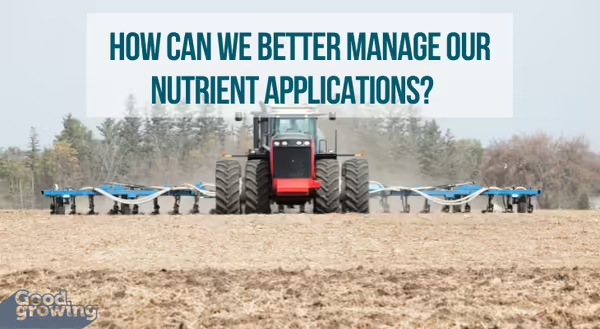
Whether you apply fertilizer to your lawn, pasture, or production field, the 4R principles of nutrient management is relevant information that can be used when making applications. When making fertilizer applications, it is always important to consider if we are using the Right fertilizer source at the Right rate, at the Right time, and in the Right place.
Right Source In order to determine if we are using the correct fertilizer source, it is important to consider how the fertilizer will be used. If the fertilizer is applied earlier in the season with the hope of providing a season long benefit, a slow release or stabilized form is suggested; this is often used with nitrogen as we can easily lose nitrogen in the soil due to environmental factors.
If applying nitrogen to a lawn, it is suggested to use a nitrogen rich source such as urea (46-0-0) rather than a balanced source (10-10-10); with the balanced source, we are also applying phosphorus and potassium which may not be needed. Excess phosphorus may result in phosphorus runoff.
Right Time Nitrogen recommendations for lawns range from 1 to 4 lbs. of actual N per 1000 sq. ft., or 44 to 175 lbs. per acre. Nitrogen recommendations for corn can vary by grower, but potentially range from 100 to 250 lb. of actual N per acre. With these large quantities of a fertilizer that we know is very mobile in the soil, it is advisable to make split applications; apply half or part of the nitrogen early in the season and the rest later in the season. This helps to increase the nutrient availability later in the season for the growing lawn or crop. Applying fertilizer at the right time also includes not applying phosphorus (manure or inorganic fertilizers) to frozen or snow covered soils, and applying fall nitrogen once soil temperatures are consistently below 50 degrees at a 4-inch depth.
Right Rate When fertilizing with the right rate, it is suggested to start with a soil sample and only apply fertilizer based on the soil nutrient supply and what the plant needs. Determining the right rate of nutrients needed is important to the success of a nutrient management program. This includes applying too much fertilizer and losing it from leaching, runoff, volatilization, etc., or applying too little fertilizer which can limit the availability of other nutrients in the soil. The use of variable rate applications help to better tailor fertilizer needs to different soil types and soil nutrient levels.
Right Place When fertilizing in the right place, only apply nutrients where the crop can use them. This includes applying nutrients only in areas that are considered deficient based off a soil test, incorporating broadcast applied phosphorus fertilizers, and monitoring broadcast spreaders range to prevent application in the street and waterways. Fields or lawns can be managed in zones to only apply to areas where nutrient deficiencies occur. Precision guidance can used for variable rate applications, planting over the fertilizer band, and accurate applications.
Good Growing Fact: With the Illinois Nutrient Loss Reduction Strategy, the goal is to reduce the state’s phosphorus load by 25 percent and nitrate-nitrogen load by 15 percent by 2025. With the implementation of the 4R principles of nutrient management, this goal can more easily be achieved. The 4R Nutrient Stewardship covers so much more than what I have touched on here; for more information, learn more at Nutrient Stewardship. You can also contact your local extension office for more assistance.
Signup for our emails! Want to get notified when new Good Growing posts are available? SIGN ME UP
MEET THE AUTHOR
Katie Parker is a Local Foods and Small Farms Educator with University of Illinois Extension, serving Adams, Brown, Hancock, Pike, and Schuyler counties. Katie provides programming with an emphasis on row crop production, soil fertility, composting, vegetable production, and ornamental horticulture.